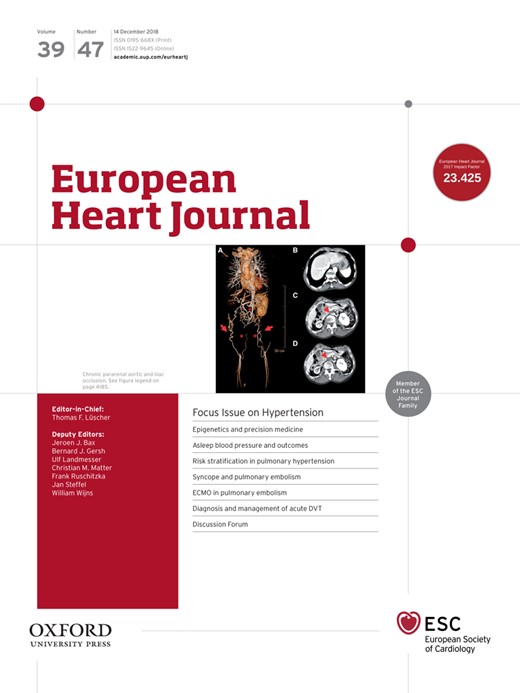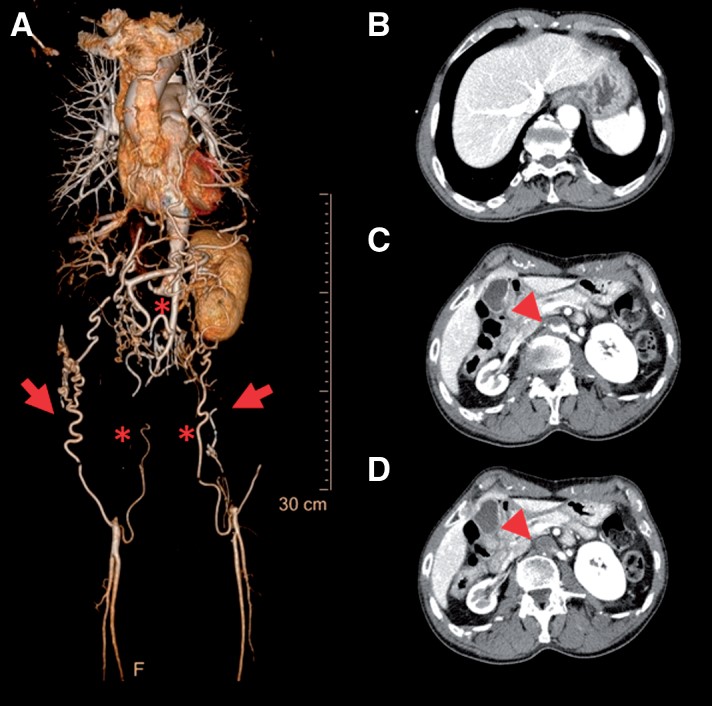
Cover image

Chronic pararenal aortic and iliac occlusion
Mattia Cattaneo1,2*, Carla Puligheddu3, Gabutti Luca2,4, and Augusto Gallino1,5
1Department of Cardiovascular Medicine, Ospedale Regionale di Bellinzona e Valli – San Giovanni, Via Ospedale, 6500 Bellinzona, Switzerland; 2Department of Internal Medicine, Ospedale Regionale di Bellinzona e Valli – San Giovanni, Via Ospedale, 6500 Bellinzona, Switzerland; 3Department of Radiology, Ospedale Regionale di Bellinzona e Valli – San Giovanni, Via Ospedale, 6500 Bellinzona, Switzerland; 4University of Lausanne, Lausanne, Switzerland; and 5University of Zurich, Zurich, Switzerland
*Corresponding author. Tel: +41 91 811 85 34, Fax +41 91 811 91 69, Email: [email protected]
A 76-year old deaf-dumb man known for metabolic syndrome, cerebrovascular disease, worsening renal function, a 40 pack year smoking history, and alcohol abuse was admitted for an uncomplicated head trauma after an accidental fall. Medical history was significant for a IIb stage Fontaine (Rutherford 2 stage) claudication. Physical examination showed neither abdominal bruits nor ischaemic changes of skin and subcutaneous tissues of the lower limbs (LL). There was a bilateral severe reduction of the ankle–brachial index, thus diagnosing significant LL peripheral artery disease.
The patient underwent a computed tomography angiography that disclosed a complete chronic thrombotic occlusion of the pararenal abdominal aorta (AA) and bilateral aortoiliac occlusion including the entire external iliac arteries (Panel A, *). Common femoral arteries were perfused bilaterally by collaterals. Systemic collateral pathways from the abdominal wall (Panel A, red arrows) connected the superior and inferior circulations. Right renal artery was included in the atherothrombotic occlusion with complete occlusion and ipsilateral renal atrophy (Panels C and D, red arrows). Subsequently, to his comorbidities, the alcohol abuse and the fragile social environment, it was decided to pursue a conservative management by best medical therapy. Chronic occlusive disease represents a minority of patients with aortoiliac disease.
This case involving the pararenal AA, renal, and complete bilateral iliac arteries chronic occlusion represents an unusual and severe manifestation in this group. Chronic occlusion still embodies a complex management and treatment issue. Medical, endovascular, and surgical management have been proposed, however, the management should be individualized.




